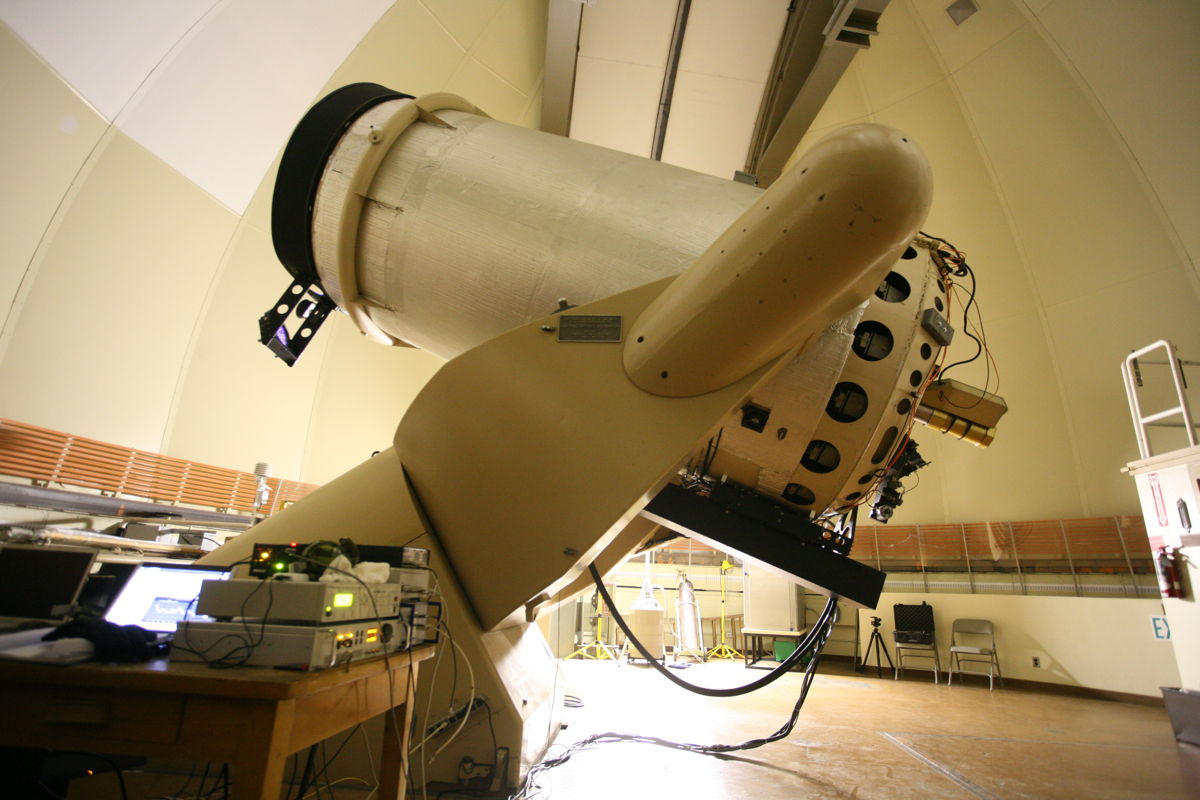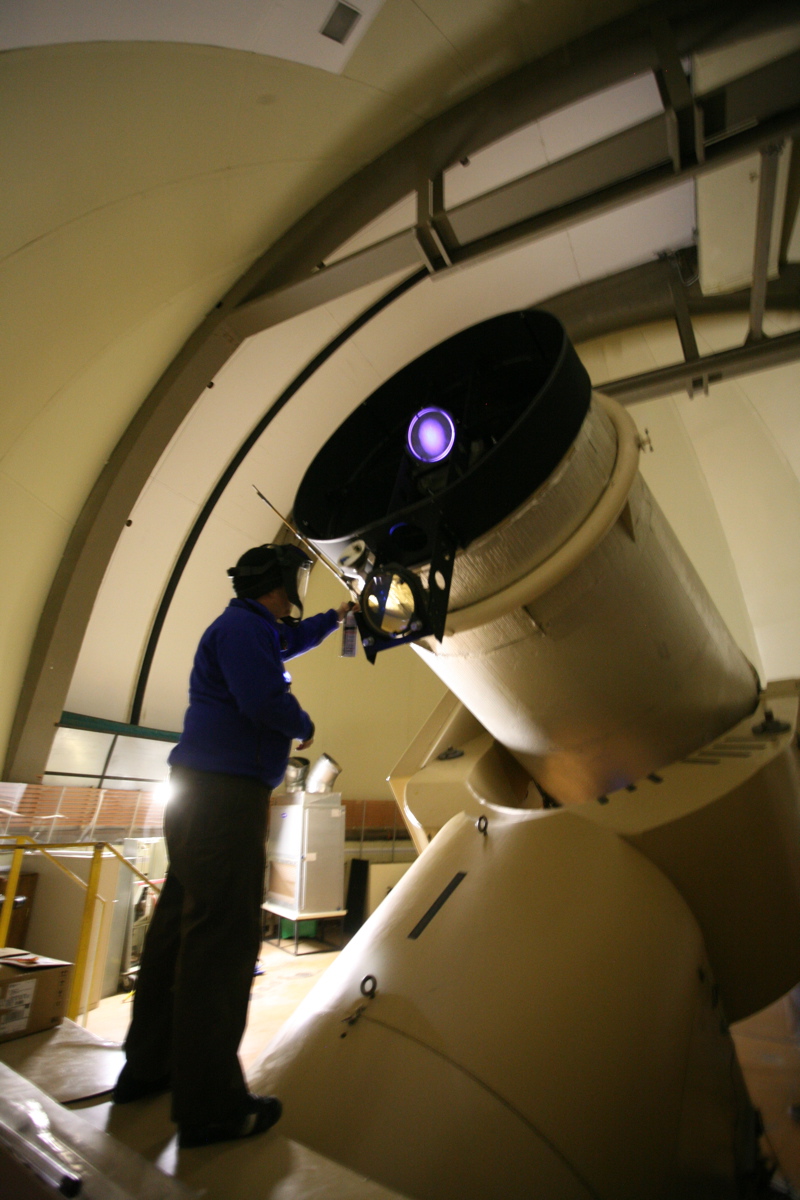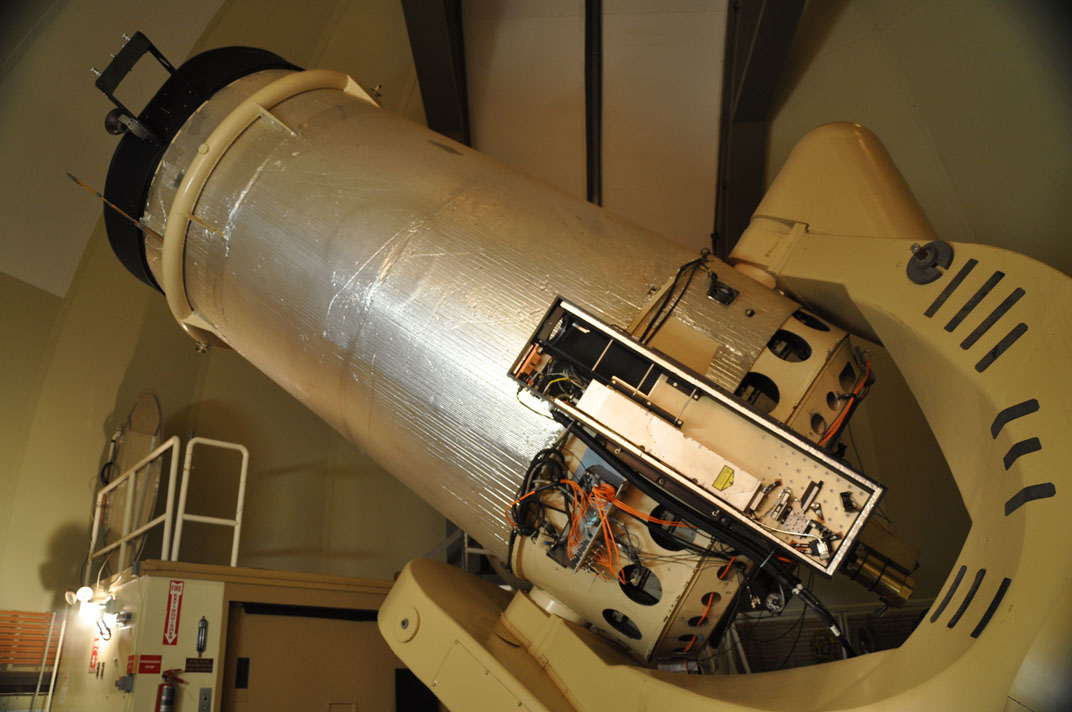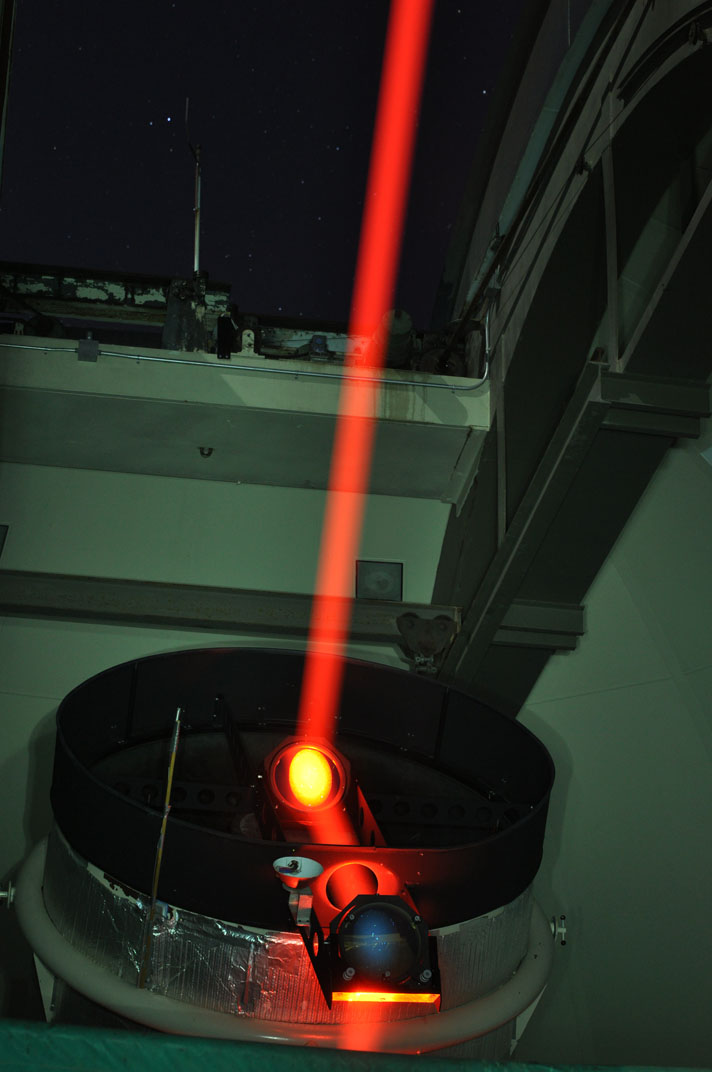Their ultraviolet (UV) laser is mounted on the south side of the telescope. One of the chief issues for the week was the installation and testing of their periscope which transfers the laser beam from being just offset from where the telescope is pointing to being on axis with the telescope.
If you look at the photo below you can see the location of the laser, which is located in the black box just under the telescope on the right side. From this position the laser will propagate to the upper left where their periscope assembly is located. You can see that as the black end of the telescope with something hanging off of it.

The second photo shows the whole set up from a different perspective. Note that the cover to the laser has been removed. Click on the image to get a better look at its innards.
The third photo shows the periscope assembly from a different vantage point. Christoph Baranec (Robo-AO's principal investigator) can be seen adjusting a mirror. In this image the UV laser is on. UV light is invisible, but still potentially damaging so you'll notice that Christoph is wearing a face shield to protect his eyes (I was wearing one too when I took this photo). Also notice that the mirror on the center axis of the telescope is fluorescing due to the UV light shining on it.
 Saving the best for last, this final photo shows the top of the telescope. It was taken with a camera that records UV and visible light, so it reveals both the telescope and the normally invisible UV laser beam.
Saving the best for last, this final photo shows the top of the telescope. It was taken with a camera that records UV and visible light, so it reveals both the telescope and the normally invisible UV laser beam.The team has also been evaluating any flexure in the telescope and laser pointing to better ensure better results in the future.
Stay tuned for more on the Robo-AO program. Their next observing run will be in March.





2 comments:
Article lacks scientific content: What is the purpose of the laser? Why a UV laser rather than IR, etc.? What are the frequency and intensity characteristics of the laser? Embedded links to more info would suffice.
There is an embedded link to the project website.
I have posted about Robo-AO in the past and described the program here:
http://palomarskies.blogspot.com/2010/09/robo-ao-comes-to-palomar.html
Post a Comment